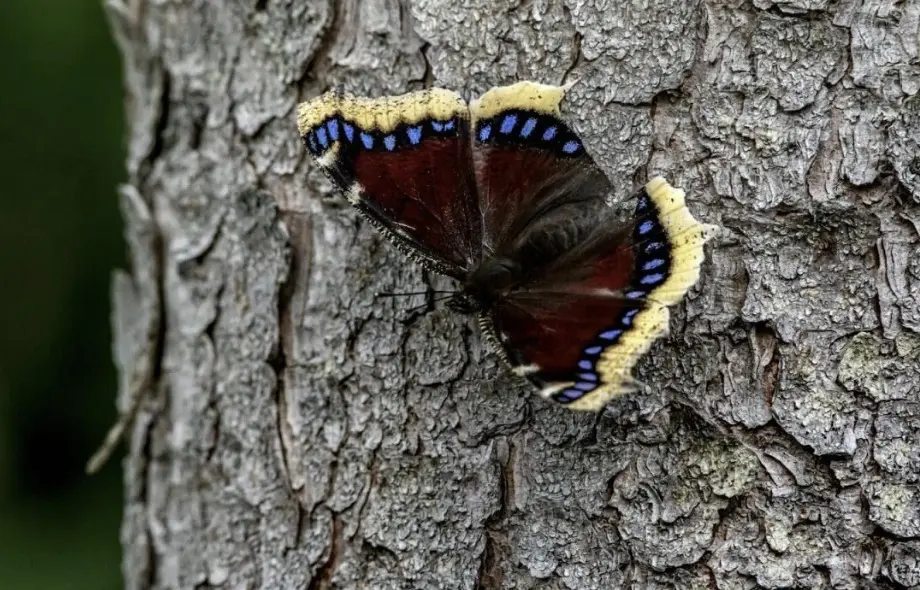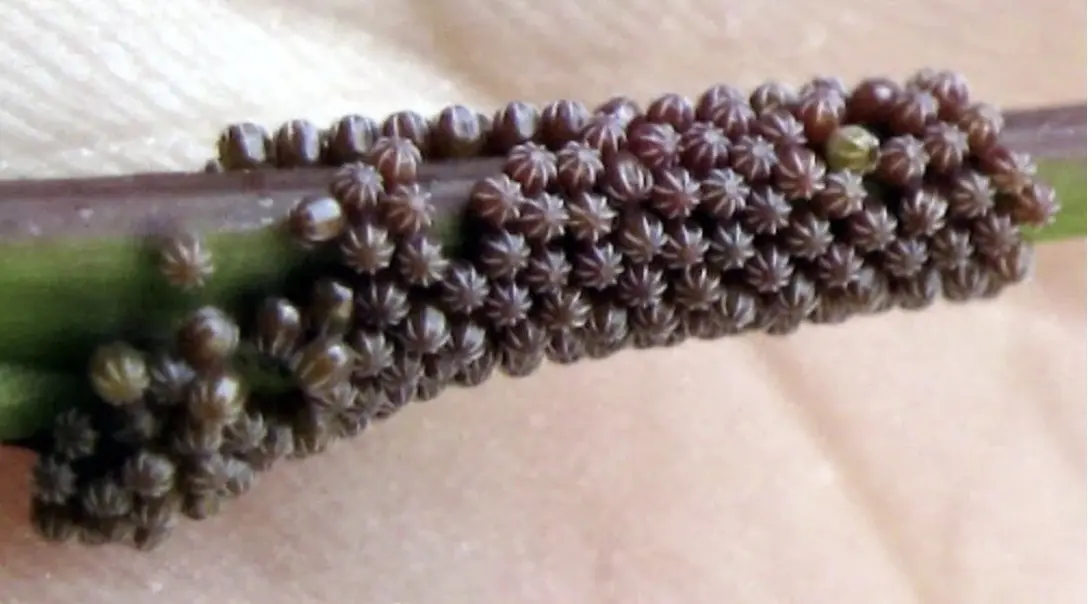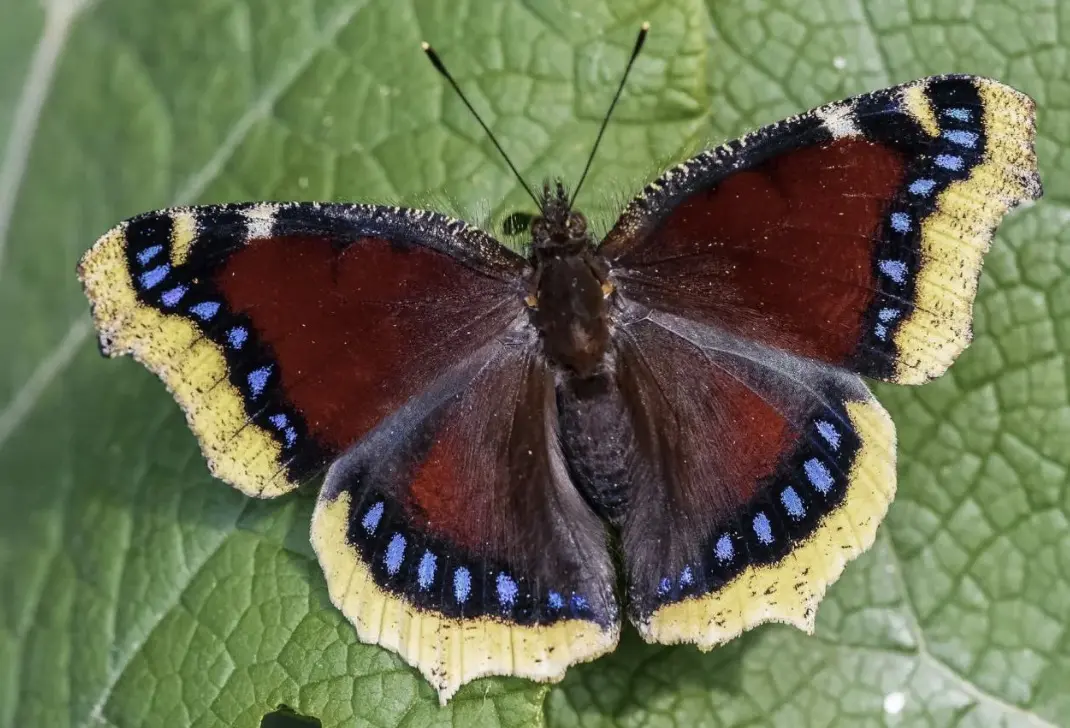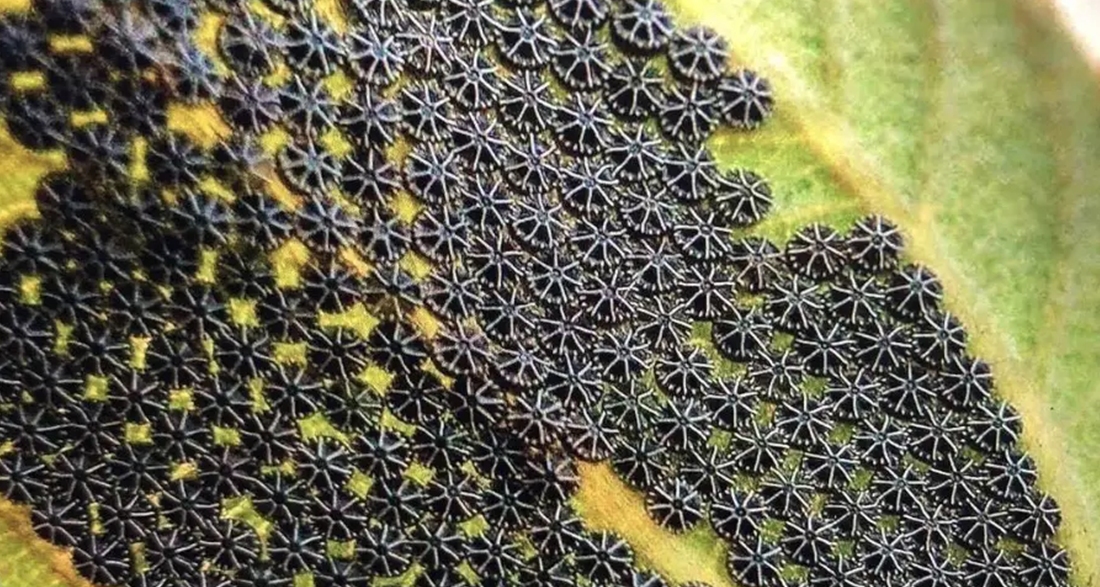Gardening is a deeply satisfying hobby. Watching your plants grow and flourish from your hard work is rewarding. But let’s be honest, it can also be challenging. One of the biggest obstacles is dealing with pests. It can be tricky to know which insects are helpful and which are harmful.
A Strange Encounter on Social Media
Recently, I saw a picture on social media that both puzzled and scared me. It showed a leaf covered in tiny, detailed black geometric patterns. At first, it looked like the leaf was covered in an alien lattice or some strange disease. Many others were curious and confused too.
The Mystery Unveiled: Nymphalis Antiopa Eggs

After some research, I discovered that these unusual patterns were the eggs of Nymphalis Antiopa butterflies, also known as Mourning Cloak butterflies. This species has a fascinating life cycle and unique characteristics.
The Eggs
The eggs of the Nymphalis Antiopa are laid in clusters on leaves. Up close, they look like a delicate layer of fine black lace. While initially alarming, they are quite beautiful once you get over the shock. My first thought was whether this would be good or bad for my garden.
The Benefits of Nymphalis Antiopa
Luckily, the Nymphalis Antiopa butterfly brings several benefits. Although their caterpillars eat leaves, they prefer trees and shrubs like willows, elms, and poplars. So, if your garden is full of vegetables and flowers, you’re likely safe. Additionally, these butterflies feed on decaying fruit and help with decomposition, making them quite beneficial.

The Life Cycle
Watching these butterflies go through their life cycle is fascinating. The caterpillars hatch from their intricate eggs, appearing black with tiny white dots and bristly bodies. They go through several stages, growing larger and shedding their skin each time.
The Chrysalis and Transformation
When ready, the caterpillars find a safe place to pupate, transforming inside a chrysalis that looks like a tiny sleeping bag. This stage can last from a few weeks to several months, depending on the environment. When they emerge, they become stunning Mourning Cloak butterflies with dark, velvety wings adorned with blue spots and a bright yellow edge.
Unique Behavior of Mourning Cloak Butterflies
One of the most intriguing aspects of Mourning Cloak butterflies is their hibernation behavior. Unlike many other butterflies, they hibernate in the winter. They find cozy hiding spots under sheds, loose bark, or wood piles. They are among the first butterflies to appear in spring, often before flowers bloom. Their early arrival and dark, somber wings have earned them the name “Mourning Cloaks.”

Embracing the Balance in Gardening
As gardeners, we often worry about the immediate impact of insects on our plants. Seeing caterpillars can make us fear for our garden’s health. However, it’s essential to consider the bigger picture.
The Nymphalis Antiopa butterfly is a perfect example of nature’s balance. While their caterpillars do eat some leaves, they won’t destroy your garden. In fact, providing a home for these butterflies can enhance your garden’s ecosystem.
What to Do if You Find Nymphalis Antiopa in Your Garden
If you discover these caterpillars or eggs in your garden, I recommend leaving them alone. Enjoy the process and watch the transformation. If you’re very concerned about your plants, you can carefully move the caterpillars to a tree or shrub where they will be happier and less likely to eat your prized flowers.

The Key to Successful Gardening
The key to successful gardening is balance. It’s about living in harmony with the creatures that share your space and the plants you love. The next time you find something unusual in your garden, take a moment to investigate before reaching for pesticides. You might uncover something extraordinary, like the Nymphalis Antiopa butterfly eggs.
Gardening is an adventure, filled with both bounty and challenges. Embrace every season’s surprises and joys, and your garden will thrive.
Share your thoughts in the comments down below!


